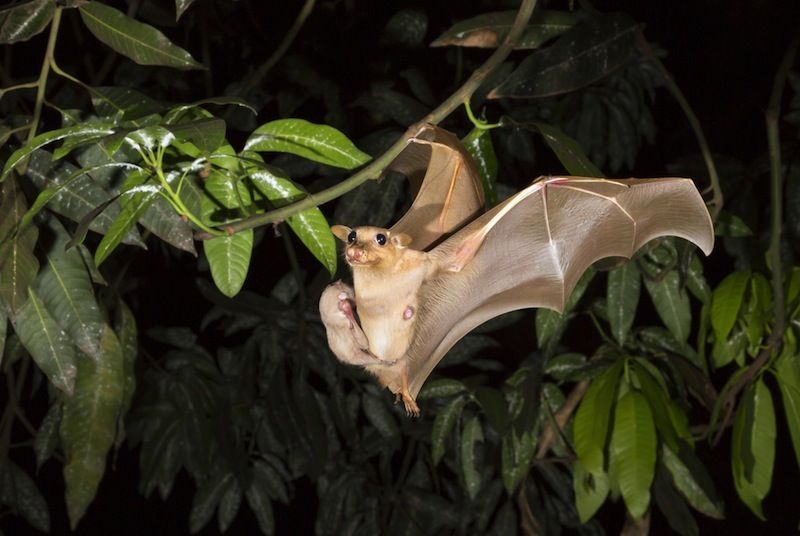How Some Exposure to Ebola Could Lead to Immunity

Epidemics like the current Ebola outbreak in West Africa often get started when people make contact with animals carrying infectious diseases, but, paradoxically, a certain amount of human exposure to a virus at its source can actually also prevent the extensive spread of a disease, new research suggests.
Finding a "sweet spot" – where there is enough human contact for some people to build immunity to a virus, but in a way that does not cause a disease to spread widely, could be a key to preventing deadly diseases from becoming epidemics, researchers say.
"If we're really worried about emerging infectious diseases, we really need to pay attention to the ecological interfaces between animal reservoirs and the human populations that interact with them," said Timothy Reluga, a mathematical epidemiologist at The Pennsylvania State University.
Infectious diseases such as Ebola hide out within animal populations. Scientists call these populations "reservoirs," and contact between humans and these animals is what allows these diseases to hop across species. Some human communities serve as bridges between the animal hosts and the wider human population.
Within these bridge communities, humans are often exposed to animals that carry viruses, including dogs, pigs, bats and birds. When a virus does move form an animal to a human, "Usually what happens is nothing — the virus dies because it is not suited to our bodies," Reluga told Live Science.
"But every once in a while, the virus makes the transition and starts infecting cells in a person," said Reluga, who co-authored the study published Tuesday (Oct. 21) in the journal Proceedings of the Royal Society B. [10 Deadly Diseases That Hopped Across Species]
And even if the virus does replicate within the human body, it can't cause an epidemic unless it can also be transmitted from one person to another. In some diseases, such as rabies, infected people seldom if ever transmit the virus to others. But in others, like measles and smallpox, the viruses are much more transmissible among people, Reluga said.
Sign up for the Live Science daily newsletter now
Get the world’s most fascinating discoveries delivered straight to your inbox.
How epidemics start
Public health experts usually try to trace any epidemics back to the single person who was exposed to the virus ("patient zero"), but in reality, within the "bridge" communities (of people living near the animals that host the virus), a population of people has usually been exposed to it, and some have even developed immunity to it.
For example, Ebola virus is present in bats, and infects gorillas and other primates. While it's not clear exactly how the deadly Ebola epidemic in West Africa got started, scientists know that the disease spread by way of a bridge community, Reluga said.
To better understand how a virus can cause an epidemic, Reluga and his colleagues ran a series of mathematical simulations in which they varied the rate of exposure of a bridge community to a hypothetical virus.
The researchers found there was a tradeoff — the more people exposed to the virus, the greater the risk that it could spread. But more exposure also meant that more immunity built up within the bridge community, which acted as a barrier to the wider human population.
Tipping point
There's no single perfect rate of exposure that prevents it from becoming an epidemic, the simulations showed. Rather, "there's a sweet spot that’s the worst possible case," Reluga said. If people are exposed at that particular rate, there's enough contact to spread the disease more widely, but not enough immunity to stop its emergence.
"Past that point, if you get people exposed really rapidly, that’s okay, because they're making a very strong barrier for emergence [of an epidemic]," Reluga said. "Or, if you stop exposure totally, that’s good," because then no one can spread the disease. In other words, "the extremes are good," he said.
The findings suggest that human bridge communities could serve as important sentinels for the emergence of epidemics. If vaccine exists for a virus, health workers could vaccinate only the bridge communities to create a barrier against spreading the disease to the wider population, the researchers said.
"By paying attention to those particular groups, we might be able to get a better handle on how epidemics happened in the past and protect against them in the future."
Follow Tanya Lewis on Twitter and Google+. Follow us @livescience, Facebook & Google+. Original article on Live Science.











